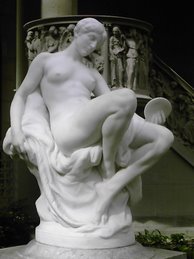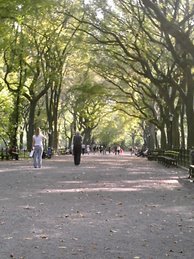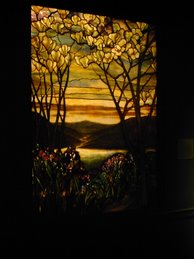By Joseph Kellard
The Dec. 3 issue of Time Magazine has a cover story on what supposedly makes man good/evil. I've not read it yet, but the subheads surrounding the print edition clearly state Time's view: man's morality is writ deep in his DNA. With the cover featuring photos of Ghandi (the good) and Hitler (the evil), with dotted lines leading each photo to a different section (left and right) of an oversized human brain, you can bet Time's take on good and evil is that it's all about biology. Ideas, fundamental premises, philosophy-what's that have to do with anything?
http://www.time.com/time/covers/0,16641,1101071203,00.html
There's also a moral quiz you can take, which includes the typical "life boat" scenario.
http://www.time-blog.com/graphics_script/2007/moralityquiz/index.html
In my regular reading of newspapers and magazines, I come across articles like this all the time, each explaining all types of behaviors mainly or exclusively on biology grounds, with never a mention that man has not just a brain, but a mind with ideas and free will. It's gotten to the point now that a biological explanation is attributed to almost every human action or emotion. (I recall an article in USA Today, right around when we turned our clocks back for daylight savings, about how people get more "depressed" when it gets darker earlier each day, and some biological chemical explains it all.)
This Time article provides a good opportunity for my readers to write letters to the editor. Let's start injecting an Objectivist view into this issue. At least let's try to get a debate going on an issue where it's noticeably absent.
Friday, November 30, 2007
Tuesday, November 20, 2007
Anatomy of a Story
By Joseph Kellard
My front-page story on Roger Folz originated in September, after Elliot Leibner invited me to the Oceanside Rotary Club’s bimonthly meeting at Alias Smith & Jones. I was there to meet a Honduran mother who had brought her 7-year-old son to Long Island to undergo heart surgery through the club’s “Gift of Life” program.
Always searching for potential stories, I agreed to attend a meeting this month whose guest speaker would be the new 4th Precinct commander, with the hope that I’d get a story out of it. But when I attended that meeting, I ended up starting another, much different story.
I called Leibner the day before the meeting, and he mentioned in passing that his father-in-law, Roger Folz, owner of the Folz Vending Co., was closing his building in December. “Really,” I said, knowing that Folz is a nationwide distributor of gumball and novelty machines — an Oceanside institution for many decades. Certainly that could be an interesting story, I thought.
When Folz, 79, showed up at the Rotary meeting the following day, he agreed to an interview. We sat in an empty dinning room, where my questions ranged from “How and when did you start the business?” to “What’s it like for you to see it close for good?” Leibner, who once worked for Folz, joined in, offering some information about his father-in-law and his vending company.
After I talked to them and some fellow Rotarians, I knew there was more to develop in this classic American tale of a man of modest beginnings who built a successful company and made a fortune doing it. I asked Folz for a second interview at his office, where he’d likely be more comfortable and I could observe him in his environment, and mine a richer story. The next day I trekked over to his office and warehouse on Lawson Boulevard. As expected, the visit provided me with some greater insights and information.
When I arrived, Leibner gave me a tour of the warehouse, where I talked with some workers, who each told me that Folz was a fair man who treated them well. Then Folz arrived, and at one point as we walked around, he mysteriously turned quiet. At first I though he was angry — perhaps I was asking to see too much? But then I noticed that tears had welled up in his eyes. As he led the way to his office upstairs, Leibner tapped me and motioned with his hands, as if breaking a stick in half, to indicate Folz was heartbroken that his company, once the world’s largest bulk operator, which he started with a few hundred dollars, would be moving to Colorado next month.
In his office, Folz showed me the many photos on the walls, each revealing bits of his company’s history — shots of his family, politicians and celebrities — as well as the plaques he’d received recognizing his success. Our conversation ranged from his lobbying efforts to letters customers had written him to his business mentors and his company’s expansive years, when he earned accounts with major retailers including Toys R Us and Wal-Mart. The pictures may not have generated a thousand words each, but they gave him a lot to talk about as I scribbled away.
I’d made an appointment for the Herald photo editor to take photos of Folz and his employees the next day, and Leibner copied for me a photo of Folz with one of the more prominent people he’s met, President George H.W. Bush. While transcribing my notes back at the office, I decided that it would be better not to rush such an rich story. So I put off writing it for a week. This gave me time to call other people who knew Folz well. I tried former Senator Al D’Amato, since he appeared in a few of Folz’s photos, hoping to get a better understanding of their political relationship, but we were unable to hook up. But Sal Aragona of Harbor Isle, Folz’s first employee and, later, his shop steward for decades, was available, and gave me lots of raw material.
My first draft came to 2,600 words, so I had to make considerable revisions. Meanwhile, I did some Internet research on Folz and the bulk vending industry, and double-checked some facts with Leibner. At that point, I decided it was an interesting enough story to go over in detail with my copy editor, Jim Harmon. So last Friday, we sat down together for nearly two hours and, as always, he gave me some good suggestions that improved my story. Mostly, I cut some details that were bogging it down a bit.
Now it’s Monday, my paper’s press day, and as I write this, while hunting down names for photo captions and putting the final touches on the story, I’m doing the same for the others I wrote for this week’s issue. But I wanted to let readers in on how a Herald story can originate and develop before the final version goes to print. I hope you find our cover story as interesting and enjoyable to read it as I did reporting and writing it.
My front-page story on Roger Folz originated in September, after Elliot Leibner invited me to the Oceanside Rotary Club’s bimonthly meeting at Alias Smith & Jones. I was there to meet a Honduran mother who had brought her 7-year-old son to Long Island to undergo heart surgery through the club’s “Gift of Life” program.
Always searching for potential stories, I agreed to attend a meeting this month whose guest speaker would be the new 4th Precinct commander, with the hope that I’d get a story out of it. But when I attended that meeting, I ended up starting another, much different story.
I called Leibner the day before the meeting, and he mentioned in passing that his father-in-law, Roger Folz, owner of the Folz Vending Co., was closing his building in December. “Really,” I said, knowing that Folz is a nationwide distributor of gumball and novelty machines — an Oceanside institution for many decades. Certainly that could be an interesting story, I thought.
When Folz, 79, showed up at the Rotary meeting the following day, he agreed to an interview. We sat in an empty dinning room, where my questions ranged from “How and when did you start the business?” to “What’s it like for you to see it close for good?” Leibner, who once worked for Folz, joined in, offering some information about his father-in-law and his vending company.
After I talked to them and some fellow Rotarians, I knew there was more to develop in this classic American tale of a man of modest beginnings who built a successful company and made a fortune doing it. I asked Folz for a second interview at his office, where he’d likely be more comfortable and I could observe him in his environment, and mine a richer story. The next day I trekked over to his office and warehouse on Lawson Boulevard. As expected, the visit provided me with some greater insights and information.
When I arrived, Leibner gave me a tour of the warehouse, where I talked with some workers, who each told me that Folz was a fair man who treated them well. Then Folz arrived, and at one point as we walked around, he mysteriously turned quiet. At first I though he was angry — perhaps I was asking to see too much? But then I noticed that tears had welled up in his eyes. As he led the way to his office upstairs, Leibner tapped me and motioned with his hands, as if breaking a stick in half, to indicate Folz was heartbroken that his company, once the world’s largest bulk operator, which he started with a few hundred dollars, would be moving to Colorado next month.
In his office, Folz showed me the many photos on the walls, each revealing bits of his company’s history — shots of his family, politicians and celebrities — as well as the plaques he’d received recognizing his success. Our conversation ranged from his lobbying efforts to letters customers had written him to his business mentors and his company’s expansive years, when he earned accounts with major retailers including Toys R Us and Wal-Mart. The pictures may not have generated a thousand words each, but they gave him a lot to talk about as I scribbled away.
I’d made an appointment for the Herald photo editor to take photos of Folz and his employees the next day, and Leibner copied for me a photo of Folz with one of the more prominent people he’s met, President George H.W. Bush. While transcribing my notes back at the office, I decided that it would be better not to rush such an rich story. So I put off writing it for a week. This gave me time to call other people who knew Folz well. I tried former Senator Al D’Amato, since he appeared in a few of Folz’s photos, hoping to get a better understanding of their political relationship, but we were unable to hook up. But Sal Aragona of Harbor Isle, Folz’s first employee and, later, his shop steward for decades, was available, and gave me lots of raw material.
My first draft came to 2,600 words, so I had to make considerable revisions. Meanwhile, I did some Internet research on Folz and the bulk vending industry, and double-checked some facts with Leibner. At that point, I decided it was an interesting enough story to go over in detail with my copy editor, Jim Harmon. So last Friday, we sat down together for nearly two hours and, as always, he gave me some good suggestions that improved my story. Mostly, I cut some details that were bogging it down a bit.
Now it’s Monday, my paper’s press day, and as I write this, while hunting down names for photo captions and putting the final touches on the story, I’m doing the same for the others I wrote for this week’s issue. But I wanted to let readers in on how a Herald story can originate and develop before the final version goes to print. I hope you find our cover story as interesting and enjoyable to read it as I did reporting and writing it.
Folz is Folding
Oceanside-based vending co. closing doors in December
By Joseph Kellard
"They have a cure for old age now," 79-year-old Roger Folz quipped as he slowly, carefully climbed the stairs in his office. "Die young."
On a pole suspended in the stairwell were 1-cent gumball machines that he once installed in stores nationwide, having founded Folz Vending Co. in 1949. Folz is now preparing to close the factory/ warehouse at his office, which he built 30 years later on Lawson Boulevard in Oceanside, for good. The corporation that now owns his company, Coinstar, will move its operations to Colorado in December.
Blame age for Folz’s heavy footsteps, but disappointment is also a factor. "I was expecting to die with my boots on," he said, "but with all the things that happened competitively, and big money going into different phases of vending, it’s been difficult. It was better to sell too soon than too late."
Folz started with $600 and 15 machines, and built his company into the world’s largest bulk vending operation. At its height, Folz had 170,000 machines in 48 states and Canada, and offices dotting both countries. Children — and adults — got their fill of gumballs, pistachio nuts, sour suckers, small toys in plastic capsules, glow-in-the-dark stickers and a variety of other novelties from Folz’s machines in mom-and-pop stores as well as major retailers from F.W. Woolworth to Wal-Mart. In 2002, the year before it merged with American Coin, a vending corporation three times its size, Folz rang up $55 million in sales.
Looking at the many photographs and plaques that crowd the walls of the main office, chronicling Folz’s rich history, you can understand his discouragement at the prospect of the vestiges of his modest business empire being shipped away next month. In his spacious personal office, Folz’s golf awards compete for space with oversized photos of his family: his wife, Adele, who, during the early years, stored the vending merchandise in their Plymouth, and their two children — his late son, Elliot, standing in a hard hat next to the skeletal structure of what would become the company’s 40,000-square-foot headquarters at 3401 Lawson in 1979.
Other photos show Folz shaking hands with the powerful friends he has made through the years, ranging from then U.S. Sens. Alfonse D’Amato and Daniel Patrick Moynihan and Rep. Norman Lent to David Rockefeller and George H. W. Bush. There are shots of Jerry Lewis and his March Of Dimes kids, whom Folz helped raise millions. Plaques recognize Folz as Toys "R" Us’s Vendor of the Year, and a framed letter from President Bill Clinton thank Folz for sending a vending machine to the White House.
When ask about letters from his customers, Folz instantly recalled a boy who wrote to him about the miniature NFL football helmets the boy collected from Folz’s machines. "He said that he spent $5 in coins trying to get a Jets helmet," Folz said, chuckling. "So I sent him a whole bag of them."
Folz said that he got his best advice from a friend in the vending business: Children are among the smartest buyers, so give them more value for their money. "The kids were very astute," Folz said. "If my machines gave them 13 pistachios and my competitor gave them 11, they knew right away to go to my machines."
He has always had a simple motto: beat the competition. "To come up with ways to do a better job with our service," he said.
At 21, after graduating from Woodmere High School in 1946 and while working as an errand boy at Merrill Lynch on Wall Street, he got the idea to do bulk vending part-time. He hooked up with Sal Aragona, a friend who was already in the industry, and the two installed their first gumball machine at a luncheonette in Valley Stream.
"Roger was a good guy, a very fair person who really had a head on his shoulders," said Aragona, who became Folz’s shop foreman in 1953. He retired in 1994 and now lives in Harbor Isle. "As far as business, he was very aggressive."
Folz recognized that most vending companies were regional — so he became the first bulk operator to sell his machines nationwide. After he and Aragona put machines in stores in New York, they headed to Florida, Texas and Massachusetts, and into Canada. Folz’s first big account was with Grand Union supermarkets in the early 1950s. By mid-decade, he had 4,000 machines in A&P stores. Folz Vending peaked in the early 1990s, when he scored accounts with K-Mart, Toys "R" Us, Wal-Mart and Safeway, which generated tens of millions of dollars in annual revenue.
Folz’s son-in-law, Elliot Leibner, who became one of his salesmen in 1984, said Folz was nothing if not a motivator. "I’ve watched Roger time and again go for a goal, and he gets results," said Leibner, who now owns Elyse Vending in Oceanside. "When people come up with excuses, he gets pissed. … He doesn’t like people who look around passively to solve problems, when most of the time you find that to achieve your goals, you have to do it the hard way."
Another element of Folz’s success was his lobbying efforts. He learned early in his career that it was crucial for a businessman to have good friends in the political world —and the friendships he has made have saved his company hundreds of thousands of dollars over the years. "His lobbying was definitely his passion," Leibner said.
Take, for example, a single year, 1965, in which Folz successfully lobbied for a 10-cent sales tax exemption and won a case against the Food & Drug Administration, after it charged that children were swallowing his toys and dying as a result. "We showed [the FDA] stats from Australia that proved that our toys were safe," Folz said, noting Congressman Lent’s help in that case.
Backed by the National Bulk Vendors Association, Folz lobbied against excise taxes, and won property tax exemptions in many locations where he operated, from New York to Illinois to Texas.
On the philanthropic front, beyond his work with Jerry Lewis in the mid-1980s, Folz has donated a great deal of money to hometown causes. Through the Oceanside Rotary Club, which he joined in 1967 and served as president twice, he donated $1,000 a year for 10 years to South Nassau Communities Hospital. For nearly two decades, the club used his warehouse to store pallets of groceries for its annual food drive.
Stu Gubenko, who spearheaded many of those drives, echoed other Rotarians when he described Folz as instrumental to the club’s longevity. "Without Roger, this Rotary could not exist," Gubenko said. "He is its backbone. He looks at life, and everything in it, as a business proposition, and he has a keen mind for that — he knows how people work and how to motivate them."
In 1998, Folz was the first major donor to the Barry and Florence Friedberg Jewish Community Center at Neil Court, writing a check for $250,000. Each year he gives $17,000 to the Oceanside High School’s Scholarship Fund. Most recently, he commissioned a Davison Avenue memorial to the Oceanside civilians killed in the World Trade Center towers on Sept. 11, 2001.
Folz’s factory workers, too, have benefited from his goodwill. "He always took care of his employees," said John Tatino, who has worked in the shipping department for 21 years. "He always thinks of us and helps us."
"Roger Folz was one of the best bosses I ever had," said Isabelino Morales, a shop steward and a 19-year employee. "He treated the people very decently."
While Tatino has a new job lined up at St. Francis Hospital, Morales has yet to find work, and like many other employees soon to be laid off, he is still searching. And Folz, too, is uncertain about his future. The beginning of his company’s end came, ironically, during its peak years, the early ’90s. A recession cost him some 5,000 accounts from stores forced to close, a blow he never recovered from. "Plus, more vending companies were popping up and copying what we were doing," he said.
Coinstar, the leader in coin counting, DVD and crank vending machines, bought American Coin, and with it, Folz, in 2004. When Coinstar moves to Colorado on Dec. 21, Folz and eight of his front-office personnel will stay in Oceanside, at least for the time being.
Meanwhile, Leibner is trying to convince his father-in-law to join him in his vending business across town. "One thing is for sure," Leibner said. "Roger can leave knowing that for anyone who came to the United States wanting to achieve the American dream, they would want to have achieved what he accomplished."
Please post a comment about this article. For private comments, email Joseph Kellard at Theainet1@optonline.net.
Copyright © 2007 Joseph Kellard
By Joseph Kellard
"They have a cure for old age now," 79-year-old Roger Folz quipped as he slowly, carefully climbed the stairs in his office. "Die young."
On a pole suspended in the stairwell were 1-cent gumball machines that he once installed in stores nationwide, having founded Folz Vending Co. in 1949. Folz is now preparing to close the factory/ warehouse at his office, which he built 30 years later on Lawson Boulevard in Oceanside, for good. The corporation that now owns his company, Coinstar, will move its operations to Colorado in December.
Blame age for Folz’s heavy footsteps, but disappointment is also a factor. "I was expecting to die with my boots on," he said, "but with all the things that happened competitively, and big money going into different phases of vending, it’s been difficult. It was better to sell too soon than too late."
Folz started with $600 and 15 machines, and built his company into the world’s largest bulk vending operation. At its height, Folz had 170,000 machines in 48 states and Canada, and offices dotting both countries. Children — and adults — got their fill of gumballs, pistachio nuts, sour suckers, small toys in plastic capsules, glow-in-the-dark stickers and a variety of other novelties from Folz’s machines in mom-and-pop stores as well as major retailers from F.W. Woolworth to Wal-Mart. In 2002, the year before it merged with American Coin, a vending corporation three times its size, Folz rang up $55 million in sales.
Looking at the many photographs and plaques that crowd the walls of the main office, chronicling Folz’s rich history, you can understand his discouragement at the prospect of the vestiges of his modest business empire being shipped away next month. In his spacious personal office, Folz’s golf awards compete for space with oversized photos of his family: his wife, Adele, who, during the early years, stored the vending merchandise in their Plymouth, and their two children — his late son, Elliot, standing in a hard hat next to the skeletal structure of what would become the company’s 40,000-square-foot headquarters at 3401 Lawson in 1979.
Other photos show Folz shaking hands with the powerful friends he has made through the years, ranging from then U.S. Sens. Alfonse D’Amato and Daniel Patrick Moynihan and Rep. Norman Lent to David Rockefeller and George H. W. Bush. There are shots of Jerry Lewis and his March Of Dimes kids, whom Folz helped raise millions. Plaques recognize Folz as Toys "R" Us’s Vendor of the Year, and a framed letter from President Bill Clinton thank Folz for sending a vending machine to the White House.
When ask about letters from his customers, Folz instantly recalled a boy who wrote to him about the miniature NFL football helmets the boy collected from Folz’s machines. "He said that he spent $5 in coins trying to get a Jets helmet," Folz said, chuckling. "So I sent him a whole bag of them."
Folz said that he got his best advice from a friend in the vending business: Children are among the smartest buyers, so give them more value for their money. "The kids were very astute," Folz said. "If my machines gave them 13 pistachios and my competitor gave them 11, they knew right away to go to my machines."
He has always had a simple motto: beat the competition. "To come up with ways to do a better job with our service," he said.
At 21, after graduating from Woodmere High School in 1946 and while working as an errand boy at Merrill Lynch on Wall Street, he got the idea to do bulk vending part-time. He hooked up with Sal Aragona, a friend who was already in the industry, and the two installed their first gumball machine at a luncheonette in Valley Stream.
"Roger was a good guy, a very fair person who really had a head on his shoulders," said Aragona, who became Folz’s shop foreman in 1953. He retired in 1994 and now lives in Harbor Isle. "As far as business, he was very aggressive."
Folz recognized that most vending companies were regional — so he became the first bulk operator to sell his machines nationwide. After he and Aragona put machines in stores in New York, they headed to Florida, Texas and Massachusetts, and into Canada. Folz’s first big account was with Grand Union supermarkets in the early 1950s. By mid-decade, he had 4,000 machines in A&P stores. Folz Vending peaked in the early 1990s, when he scored accounts with K-Mart, Toys "R" Us, Wal-Mart and Safeway, which generated tens of millions of dollars in annual revenue.
Folz’s son-in-law, Elliot Leibner, who became one of his salesmen in 1984, said Folz was nothing if not a motivator. "I’ve watched Roger time and again go for a goal, and he gets results," said Leibner, who now owns Elyse Vending in Oceanside. "When people come up with excuses, he gets pissed. … He doesn’t like people who look around passively to solve problems, when most of the time you find that to achieve your goals, you have to do it the hard way."
Another element of Folz’s success was his lobbying efforts. He learned early in his career that it was crucial for a businessman to have good friends in the political world —and the friendships he has made have saved his company hundreds of thousands of dollars over the years. "His lobbying was definitely his passion," Leibner said.
Take, for example, a single year, 1965, in which Folz successfully lobbied for a 10-cent sales tax exemption and won a case against the Food & Drug Administration, after it charged that children were swallowing his toys and dying as a result. "We showed [the FDA] stats from Australia that proved that our toys were safe," Folz said, noting Congressman Lent’s help in that case.
Backed by the National Bulk Vendors Association, Folz lobbied against excise taxes, and won property tax exemptions in many locations where he operated, from New York to Illinois to Texas.
On the philanthropic front, beyond his work with Jerry Lewis in the mid-1980s, Folz has donated a great deal of money to hometown causes. Through the Oceanside Rotary Club, which he joined in 1967 and served as president twice, he donated $1,000 a year for 10 years to South Nassau Communities Hospital. For nearly two decades, the club used his warehouse to store pallets of groceries for its annual food drive.
Stu Gubenko, who spearheaded many of those drives, echoed other Rotarians when he described Folz as instrumental to the club’s longevity. "Without Roger, this Rotary could not exist," Gubenko said. "He is its backbone. He looks at life, and everything in it, as a business proposition, and he has a keen mind for that — he knows how people work and how to motivate them."
In 1998, Folz was the first major donor to the Barry and Florence Friedberg Jewish Community Center at Neil Court, writing a check for $250,000. Each year he gives $17,000 to the Oceanside High School’s Scholarship Fund. Most recently, he commissioned a Davison Avenue memorial to the Oceanside civilians killed in the World Trade Center towers on Sept. 11, 2001.
Folz’s factory workers, too, have benefited from his goodwill. "He always took care of his employees," said John Tatino, who has worked in the shipping department for 21 years. "He always thinks of us and helps us."
"Roger Folz was one of the best bosses I ever had," said Isabelino Morales, a shop steward and a 19-year employee. "He treated the people very decently."
While Tatino has a new job lined up at St. Francis Hospital, Morales has yet to find work, and like many other employees soon to be laid off, he is still searching. And Folz, too, is uncertain about his future. The beginning of his company’s end came, ironically, during its peak years, the early ’90s. A recession cost him some 5,000 accounts from stores forced to close, a blow he never recovered from. "Plus, more vending companies were popping up and copying what we were doing," he said.
Coinstar, the leader in coin counting, DVD and crank vending machines, bought American Coin, and with it, Folz, in 2004. When Coinstar moves to Colorado on Dec. 21, Folz and eight of his front-office personnel will stay in Oceanside, at least for the time being.
Meanwhile, Leibner is trying to convince his father-in-law to join him in his vending business across town. "One thing is for sure," Leibner said. "Roger can leave knowing that for anyone who came to the United States wanting to achieve the American dream, they would want to have achieved what he accomplished."
Please post a comment about this article. For private comments, email Joseph Kellard at Theainet1@optonline.net.
Copyright © 2007 Joseph Kellard
Wednesday, November 7, 2007
The Dark Ages at 30 Rock
By Jospeh Kellard
Last Sunday night, after watching the games all day, I turned on Football Night in America, a show hosted by Bob Costas and other NFL commentators from the NBC studios at Rockefeller Center in Manhattan. I tuned in for the highlights, but what I saw was very dim.
One of the show's attractions is the studio's stately backdrop, a window that looks out onto the GE skyscraper and its plaza, featuring a sculpture of a bronze gilded Prometheus. During the Christmas season, this scene turns into an ice skating rink, above which stands a 75 to 90-foot colorfully-lit Norway spruce. Come December, Rockefeller Center bathes in a magnificent display of decorative lights.
While it is not so lit up just yet, imagine my dismay nevertheless when Costas announced last Sunday that, as part of NBC's efforts to raise awareness about "climate change" and man's alleged contributory "carbon footprint" to this effect, Football Night in America would conduct the second half of its show with the lights turned off. As if taking such a measure wasn’t disgraceful enough, to do this in Manhattan's most brilliantly illuminated area is doubly disgraceful.
During this segment, Costas and his cohorts talked with Matt Lauer of NBC's Today Show, who was bundled up in heavy clothes in Greenland near the North Pole. This was a preview to the morning news show's week-long reports on global warming. Lauer said something about ice sheets melting up there at a record pace …blah, blah, blah. Then we were shown Al Roker in a lush jungle somewhere (no doubt a "rainforest"), and Ann Curry was in Antarctica, both of them ready to report on its supposed effects in those regions.
Some of the guys in the studio with Costas, Keith Olbermann and Cris Collinsworth, were giggling at Laur standing next to an igloo in some desolate corner of the world. Then they all made light of doing the rest of the show in the dark, with flashlights.
Of course, what's sad is that displays like this, which are becoming evermore frequent in our post-Inconvenient Truth world, are no laughing matter. The actual truth is that fear-mongering environmentalists are so successfully scaring more and more Americans, in an attempt to induce guilt about their supposed overuse of such "conveniences" as light bulbs, that many are willfully following the greens back toward the Dark Ages.
Please post a comment about this column. For private comments, email Joseph Kellard at Theainet1@optonline.net.
Copyright © 2007 Joseph Kellard
Last Sunday night, after watching the games all day, I turned on Football Night in America, a show hosted by Bob Costas and other NFL commentators from the NBC studios at Rockefeller Center in Manhattan. I tuned in for the highlights, but what I saw was very dim.
One of the show's attractions is the studio's stately backdrop, a window that looks out onto the GE skyscraper and its plaza, featuring a sculpture of a bronze gilded Prometheus. During the Christmas season, this scene turns into an ice skating rink, above which stands a 75 to 90-foot colorfully-lit Norway spruce. Come December, Rockefeller Center bathes in a magnificent display of decorative lights.
While it is not so lit up just yet, imagine my dismay nevertheless when Costas announced last Sunday that, as part of NBC's efforts to raise awareness about "climate change" and man's alleged contributory "carbon footprint" to this effect, Football Night in America would conduct the second half of its show with the lights turned off. As if taking such a measure wasn’t disgraceful enough, to do this in Manhattan's most brilliantly illuminated area is doubly disgraceful.
During this segment, Costas and his cohorts talked with Matt Lauer of NBC's Today Show, who was bundled up in heavy clothes in Greenland near the North Pole. This was a preview to the morning news show's week-long reports on global warming. Lauer said something about ice sheets melting up there at a record pace …blah, blah, blah. Then we were shown Al Roker in a lush jungle somewhere (no doubt a "rainforest"), and Ann Curry was in Antarctica, both of them ready to report on its supposed effects in those regions.
Some of the guys in the studio with Costas, Keith Olbermann and Cris Collinsworth, were giggling at Laur standing next to an igloo in some desolate corner of the world. Then they all made light of doing the rest of the show in the dark, with flashlights.
Of course, what's sad is that displays like this, which are becoming evermore frequent in our post-Inconvenient Truth world, are no laughing matter. The actual truth is that fear-mongering environmentalists are so successfully scaring more and more Americans, in an attempt to induce guilt about their supposed overuse of such "conveniences" as light bulbs, that many are willfully following the greens back toward the Dark Ages.
Please post a comment about this column. For private comments, email Joseph Kellard at Theainet1@optonline.net.
Copyright © 2007 Joseph Kellard
Subscribe to:
Posts (Atom)





























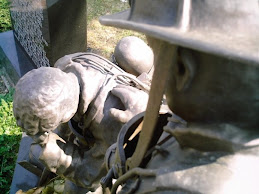
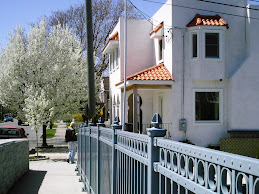
+-+June+2009.jpg)


